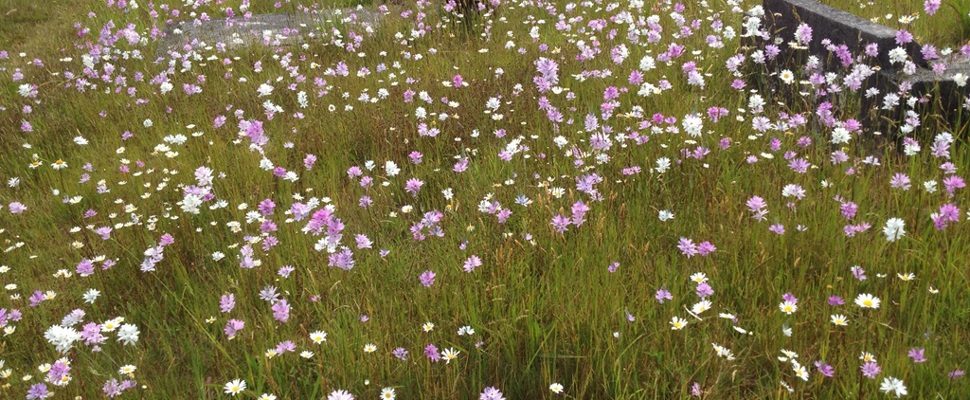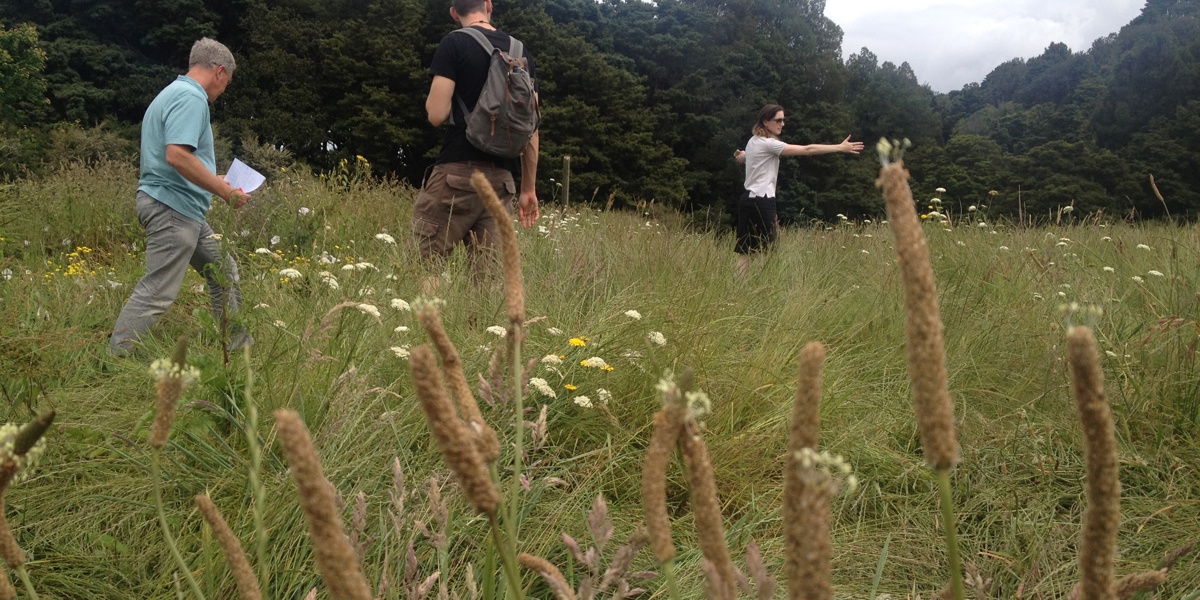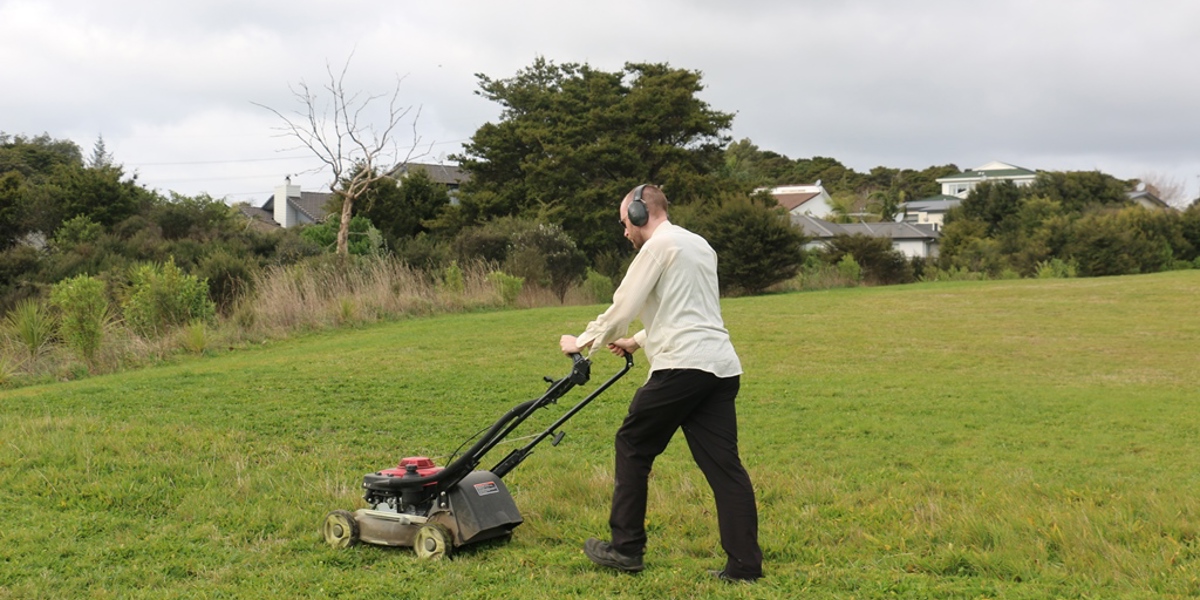
Going low mow
Achieving a sustainable meadow
Perfect (weed free, clipped, green) lawns look good but are they good for the environment? More homeowners are thinking about pollinators in their gardens as well as environmental sustainability and are re-thinking their lawns.
Sustainable Meadows Trial
Is it possible to reduce lawn mowing and still provide usable spaces that people find attractive, that also provide additional benefits such as habitats for more plants, birds and bugs, and are better at soaking up rainwater? That’s the aim of our sustainable meadows research at Auckland Botanic Gardens. We’re working with the University of Auckland and the research is funded by the Friends of Auckland Botanic Gardens.
Sustainable meadows are not planted with flowers but managed (by mowing or soil fertility) to make conditions less suitable for grasses and more suitable for flowering herbs. The research focuses on ways to encourage more shorter plants with plenty of flowers in the lawn, not ‘long grass’. We are testing mowing at different frequencies (e.g. once a year, once every two months, once after flowering etc.) as well as seeing if we can lower the fertility of the soil (there is evidence diverse meadows are encouraged by low soil fertility). Think of everything you do for a perfect lawn and reverse it.
Sustainable meadows are not pictorial meadows which are colourful naturalistic wildflower gardens, designed and planted to look like wild nature. Planting pictorial meadows is one way you can replace lawns, but they may not be self-sustaining (you may have to keep planting them). We are not researching pictorial meadows.
Research update
Two Auckland University students have worked in the sustainable meadow trial and we review our approach based on research findings. One change we are considering is introducing seeds of flowering herbs common in wild areas in Auckland, but which haven’t appeared in our trial site. In the UK annual clippings from a weed-free mature meadow are moved, full of seeds, to a new site. We will test whether the environmental conditions at our site will enable them to germinate and survive.
Social Norms
Any change to the way we manage lawns at the city-scale needs to be attractive and the reasons behind the change need to be well communicated. Neighbours notice when your lawn is not mown. Mowing is a way our society dictates that we fit in with our neighbours and communicate things like our pride and protection of property values. 'Cues to care' such as mown edges and paths are useful to help people understand that an unmown lawn might not be the sign of neglect.
Starting your own sustainable meadow
Our sustainable meadows research will provide guidance on how to make a meadow. As yet we do not have all the answers, but we have learned a few things.
Every site will respond differently to a changing mowing regime:
- Wet sites will grow a different group of flowering herbs to a dry site.
- Naturally high fertility soil may always be dominated by grass.
- If your lawn is kikuyu grass (Cenchrus clandestinus) a sustainable meadow is not possible. This grass excludes all other plants.
Starting a sustainable meadow project at your place is an experiment. Here’s how we suggest starting out:
- Start small. How much lawn do you really need? Reducing your lawn by increasing your garden beds can also improve the biodiversity values of your property.
- Start with a portion of your lawn, not the whole lawn. Start in your backyard to learn how to manage your sustainable meadow before you put it on show.
- Talk to your neighbours about your plans (especially if your meadow is in your front yard).
- Do not use fertilisers or broadleaf herbicides on your lawn.
- Reduce mowing frequency. How often you mow changes the look of your meadow. Experiment by gradually extending the times between mowing.
- Raise your mower blades leaving plants taller after each mow.
- The prettiest time for a sustainable meadow is spring.
- In summer plants are tall and dry out. Mow dry grass down if you are concerned about fire. Mowing tall grass can be difficult with a hand mower (we use a tractor mower). Meadow managers in the UK use scythes.
- Make your meadow look intentional, not neglected. Mow the edges of your meadow and a winding path through it. Use a piece of garden art (or get creative and make one) as a centre piece. Make your own sign for your “pollinator paradise” (children love designing signs and passers-by are drawn to them).

